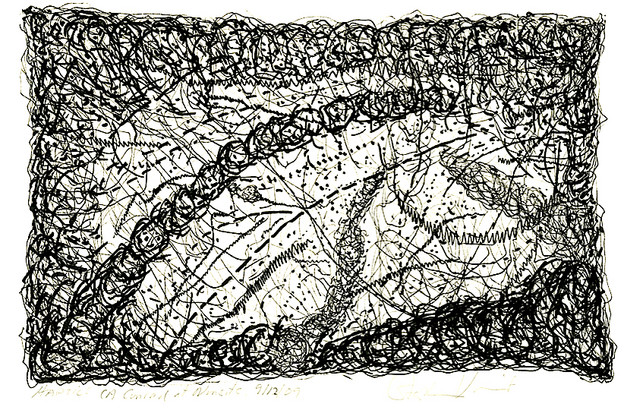Physio-digital responses to the digital
Stephen Vincent's haptic drawings of the sound of poets reading

The visualization of the sound of Charles Bernstein’s recording of “1-100” (1969), which I presented in a recent commentary titled “Anti-ordination in the visualization of the poem's sound,” struck artist, poet, maker of books Stephen Vincent as interestingly relevant to “haptic” drawings he has made while listening to various poets reading their work in the Bay Area, and I agree. He has called this activity drawing by sound (rather than of). “I like comparing my ‘physio/digital’ responses to the digital electronic ones,” he has written to me. “I think it interesting to compare the ways where the hand will go and the electronic will not. As a graphic designer, looking at my work recently has suggested: ‘Analog is the new Avant Garde’!” Vincent has made some of these haptics available through his web site:
http://www.stephenavincent.com/galleries/PoetryReadings/
He deems these haptics a version of close listening. He has done about fifty such pieces, and they befit work he’s done in a wide range of other environments and occasions; his generic description of the work is “Poetry By Other Means.” Readers are encouraged to look back at Jacket #36 (2008), where Vincent's "Ocean Beach" was published from Vincent's After Language/Letters to Jack Spicer, a book-length manuscript of letters to the poet somewhat in the manner of Spicer’s After Lorca, including poems improvised or “transversed” directly from poems in Spicer’s Language. Other work from the manuscript appeared in New American Writing and MimeoMimeo. The drawings appeared in an exhibit of the poet’s haptics (drawings by sound) in January-February 2009 at the Brauntstein Gallery, San Francisco.